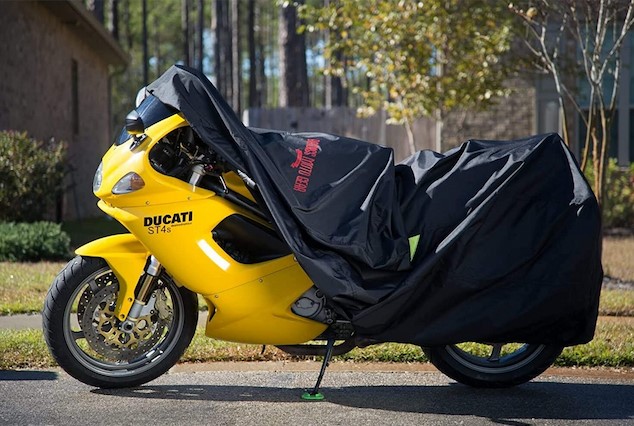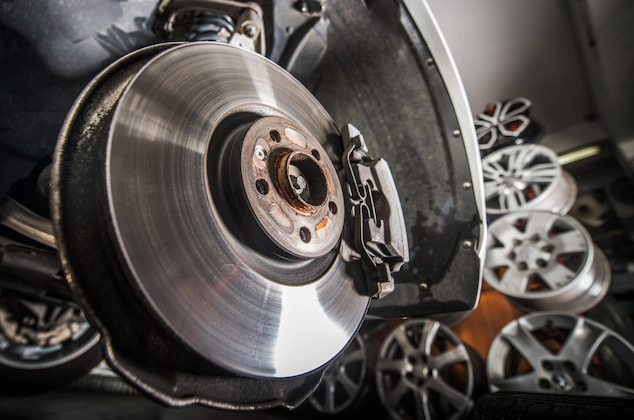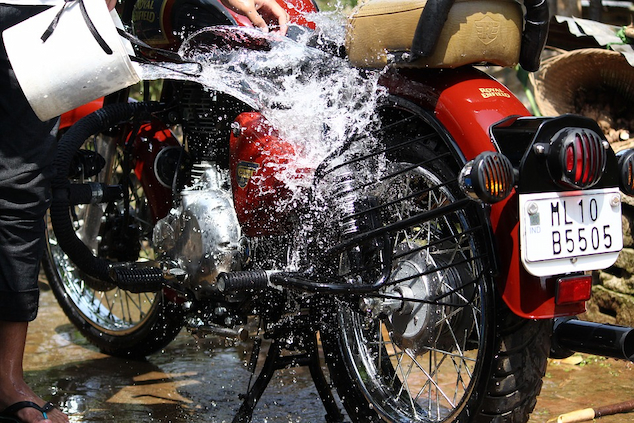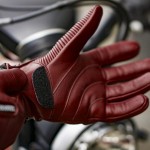Contents
Every experienced motorcyclist knows that taking care of your bike, running regular checks, properly storing it while protecting it from the weather elements are all part of the whole “biker experience”. It doesn’t take long, and the peace of mind you’ll have from knowing you personally checked your machine from top to bottom will be worth it tenfold in case something goes wrong. An hour spent in the garage now outweighs an hour spent on the side of the road troubleshooting or waiting for AMA roadside service any time of the day, for sure.
Prevention and Protection are Half of the Job

Safely storing your bike, protecting it from prying eyes or unsafe drivers is already half of the job. Additionally, and just as important, you must remember to cover your bike for the night or if you decide not to use it for some time. In this case, don’t just let it sit and collect dust. Make sure your bike is covered and sealed head to toe with a quality weather-resistant motorcycle cover Australia online stores have in stock.
Covering your bike is useful because it protects a motorcycle from water damage, UV rays from the sun, dust, and keeps it hidden from potential thieves. Such covers may be pricy, so, understandably, some riders ask if it’s worthwhile to invest in one.
However, the cost of one pales in comparison to the cost of damage to a motorcycle caused by not using one. It is important to note that water-resistant is not the same as waterproof. Water-resistant designs are good at repelling water, but they do tend to collect condensation beneath them, while waterproof motorbike cover will repel most water and won’t trap condensation.
Do a Walkaround Every Time Before You Hit the Road
It may sound silly, but when was the last time you went over every element of your bike? Everything on a vehicle wears out gradually and requires regular maintenance, or a full replacement eventually. Simply shifting your mindset into “notice anything weird” mode can expose flaws that need to be addressed before they become serious ride-stopping situations. Look for any leaks.
Oil and grit smear on the fork lowers indicate a failed fork seal. Drips from beneath the bike must never be overlooked. Give it a sniff, then trace it back to its source. If the leak has been there for some time, you may need to de-gunk your bike’s lower regions to pinpoint the source.
Check Your Brakes

Most motorcycles feature disc brakes on both the front and back, and many have two discs on the front. You can inspect your brake pads with the tires on the ground, but it’s a little easier while your bike is still in the air. Furthermore, by turning your wheels, you can examine your rotors for warping.
You should also feel the surface of the rotor for any scoring and visually look for glazing. If you notice any mild surface rust, don’t be alarmed. If your bike has been resting for a while, this is entirely natural and will go away as soon as you hit the brakes. You could also use some brake cleaner just to be certain all is in order.
Fluid Levels in Your Bike
One of the most crucial aspects of motorcycle maintenance is to keep an eye on the bike’s fluids. Bike fluids have several important tasks, including maintaining correct lubrication, cooling the engine, avoiding wear and tear, and ensuring proper braking of the bike (Brake Fluid). Brake fluid isn’t the only fluid that goes unnoticed when it comes to refreshing.
How old is your coolant? Although your machine’s maintenance intervals may vary, the fresh coolant should be added every other season (check the manual). Thorough water cleanse, or even a simple drain and fill, will go a long way in preventing corrosion within your cooling system.
If you have several motorcycles, or simply don’t put many miles on your machine, it’s a good idea to replace the oil at least once a season so you know it’s been done and you don’t have old, tainted oil in your cases. It’s worth noting that reduced mileage frequently correlates to a lot of short rides, which implies a lot of heat cycling to attract moisture condensation, which is what truly breaks down oil. Consider the type of riding you do when selecting whether to change your oil or not.
Proper Deep Cleaning

If you start at the bottom and work your way up, your wash will be faster and gentler on the paint. Begin by scrubbing your bike’s wheels, engine, and chain with motorbike detailing brushes. Scrubbing away the dirt and impurities that have accumulated after soaking can help you avoid having to clean the tank and fenders twice.
Depending on the season, water temperature might be a key component in keeping your bike in good working order. During the winter and early spring months, road salt coats your bike. Corrosion is caused by the combination of salt and water, and hot water can hasten the corrosion process. So, during the cooler months, use colder water to help protect your bike from harm. This is all a part of the above-mentioned prevention, along with your walkaround and motorcycle cover Australia wide available.
Begin rinsing the wheels and engine after removing any terrycloth pre-soaked towels. Before the wash, thoroughly clean the entire motorcycle to remove any abrasive material. Dark paint is more likely to reveal swirl marks, so avoid forceful circular washing. Consider washing your bike gently in the direction the wind blows from front to back. After washing, rinse well to ensure that the paint is clean. Then, take a few moments to scrape any remaining dirt. Remember that regular home cleansers can strip wax or harm painted surfaces so motorbike or car-wash chemicals are your safest choice.





Comments are closed.